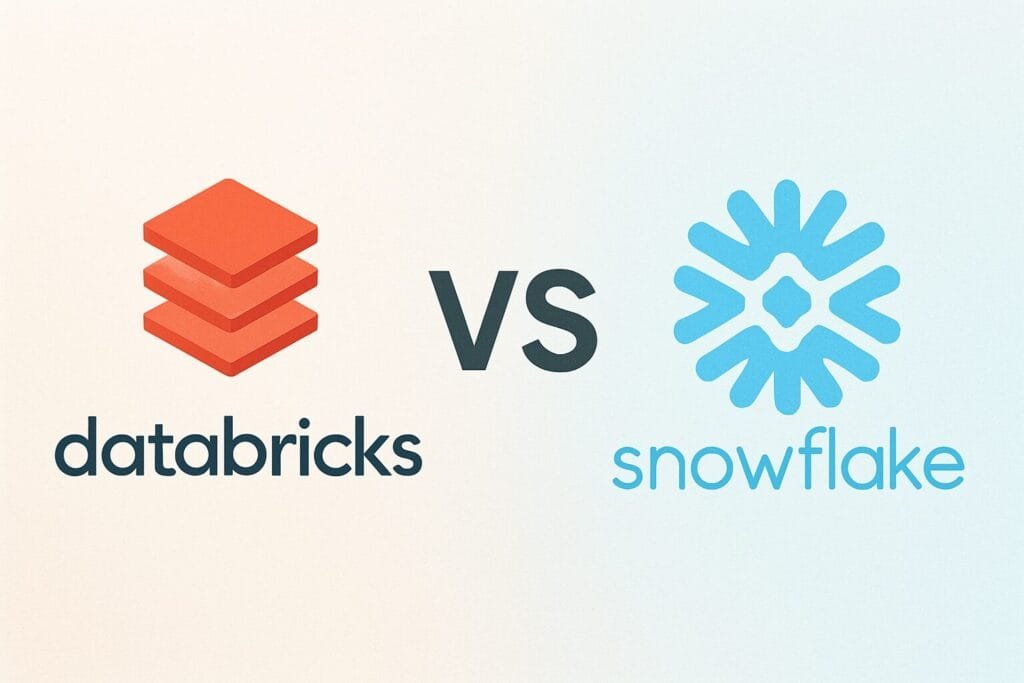In today’s data-driven world, companies rely heavily on modern data platforms to manage, analyze, and gain insights from massive datasets. Two of the most popular cloud-based data solutions are Databricks and Snowflake. Both platforms offer high scalability, strong performance, and advanced data capabilities, but they serve slightly different purposes and target audiences. Understanding their differences is essential before making a decision on which platform fits your business needs best.

Overview of Databricks
Databricks is an open, unified analytics platform built on Apache Spark. It is designed for data engineering, machine learning, and AI-driven analytics. Founded by the creators of Apache Spark, Databricks provides tools for transforming, storing, and analyzing massive data workloads across multiple cloud environments.
Databricks is particularly popular among data scientists and engineers because it integrates seamlessly with big data frameworks and supports languages like Python, SQL, R, and Scala. It also features a collaborative workspace that simplifies machine learning model development and deployment.
Overview of Snowflake
Snowflake is a fully managed cloud-based data warehouse solution that enables businesses to store and analyze data effortlessly. It separates compute and storage resources, allowing users to scale each independently for cost efficiency and performance optimization. Snowflake supports multiple cloud platforms, including AWS, Azure, and Google Cloud.
Unlike Databricks, Snowflake is focused primarily on structured and semi-structured data management and is often used by business analysts for analytics and reporting. It provides strong support for SQL and integrates with popular BI tools such as Tableau, Power BI, and Looker.
Key Differences Between Databricks and Snowflake
The main difference between Databricks and Snowflake lies in their core purpose: Databricks focuses on data engineering, AI, and machine learning, while Snowflake focuses on data warehousing and analytics. The following table highlights their main differences:
| Feature | Databricks | Snowflake |
|---|---|---|
| Core Focus | Data engineering, AI, machine learning | Data warehousing, analytics, BI |
| Primary Users | Data scientists, engineers, AI developers | Data analysts, business intelligence teams |
| Storage Architecture | Lakehouse (data lake + warehouse) | Cloud data warehouse |
| Query Language | SQL, Python, R, Scala | SQL |
| Machine Learning Support | Built-in ML libraries (MLflow, TensorFlow) | Limited; external ML integration required |
| Performance | Optimized for batch processing and streaming | Optimized for SQL-based analytics |
| Integration | Supports Spark, Delta Lake, Azure, AWS, GCP | Integrates with Tableau, Power BI, Looker |
| Scalability | Auto-scale compute for AI workloads | Elastic scaling for data queries |
| Cost Structure | Pay-as-you-go compute and storage | Separate pricing for compute and storage |
When to Use Databricks
You should choose Databricks if your company deals with complex big data pipelines or machine learning workflows. It’s ideal for:
- Building, training, and deploying AI/ML models.
- Transforming raw data in large-scale data lakes.
- Collaborating between data engineers and scientists.
- Running advanced analytics and predictive modeling.
For instance, organizations that need to perform large-scale ETL (Extract, Transform, Load) operations or use MLflow for machine learning tracking would benefit more from Databricks’ integrated environment.
When to Use Snowflake
On the other hand, Snowflake is the perfect fit for businesses focused on BI and SQL-based data analytics. It’s best suited for:
- Storing and querying large amounts of structured or semi-structured data.
- Running fast SQL queries for reports and dashboards.
- Integrating with third-party business intelligence tools.
- Teams that need simplicity and minimal maintenance.
Snowflake’s architecture makes it easy to manage performance without worrying about infrastructure, making it an excellent option for companies looking for simplicity and scalability without deep data science involvement.
Databricks vs Snowflake: Pros and Cons
Databricks Pros
- Excellent for data science and AI workloads.
- Supports multiple programming languages.
- Open and flexible with strong integration capabilities.
- Collaborative workspace for teams.
Databricks Cons
- Steeper learning curve for non-technical users.
- Complex setup for small teams or basic analytics needs.
Snowflake Pros
- Simple to set up and maintain.
- High-performance for SQL-based queries.
- Strong data sharing and governance features.
- Excellent cost efficiency for analytics workloads.
Snowflake Cons
- Limited support for machine learning.
- Not ideal for unstructured data or AI workflows.
Which Platform Should You Choose?
The decision between Databricks and Snowflake ultimately depends on your organization’s goals and technical requirements.
- Choose Databricks if you need to handle large-scale data engineering, streaming, and machine learning tasks. It’s perfect for organizations building AI-driven systems.
- Choose Snowflake if you prioritize data warehousing, business analytics, and fast SQL performance with minimal maintenance.
In some cases, organizations even combine both platforms — using Databricks for data transformation and ML tasks, and Snowflake for analytics and reporting — achieving the best of both worlds.
Conclusion
Both Databricks and Snowflake are powerful cloud-based platforms that address different stages of the data lifecycle. Databricks excels in machine learning and big data engineering, while Snowflake dominates in data storage and analytics. Before choosing, evaluate your technical team’s expertise, the nature of your data, and your company’s analytical goals. The right platform can dramatically enhance your data strategy and long-term business intelligence capabilities.

